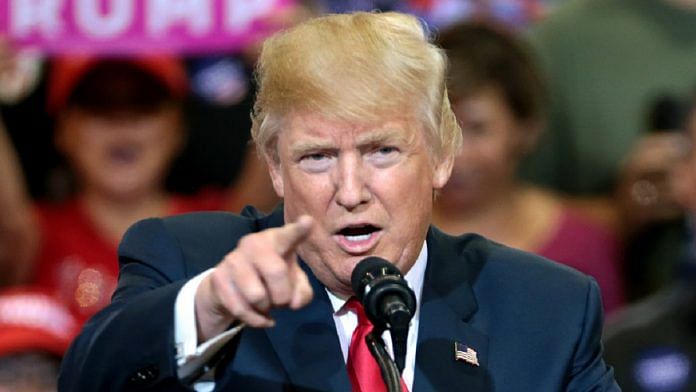US expects partners to comply and bend to its domestic politics-driven decisions, and India needs to strengthen its countervailing strategies.
The circumstances of President Trump’s recent decision to raise tariffs on steel and aluminum imports into the US has an inherent lesson for India, particularly as the relationship necessarily consolidates to mutual advantage.
It has been largely driven by US domestic political rhetoric and compulsions. Trump had campaigned in 2016, promising action against China’s ‘predatory’ economic behaviour and “currency manipulation”. Action now is aimed at shoring up his base, as the US heads to mid-term Congressional elections at the end of this year. In taking this action, the US cited a rarely used provision on ‘national security’.
Though not directed specifically against India, there is collateral impact on us. About $1 billion of Indian exports could be potentially affected. India has sought exemption on the grounds that the two share a strategic relationship, and that exports from India are not a national security threat to the US.
However, there is negativity in the Trump administration on the size of trade deficit (placing India among top 10 countries with trade surplus with US), market access, investment restrictions and intellectual property related issues. Meetings with counterparts from the office of US Trade Representative have been contentious. Some recent Indian decisions, such as the price cap on medical devices like stents, are seen as market distorting.
There are also questions being raised about extending GSP (generalised system of preferences) to India. A review of GSP is due, which benefits labour intensive sectors like jewellery and textiles in India. Companies with their own specific vested interests will seek to use the current mood in the US to generate policy constraints, as they did in the past on intellectual property or local content requirements. Triggered by the Chinese challenge, US is expected to enhance scrutiny and enforcement on intellectual property and technology flows.
The US will remain a key partner for India — the largest trade critical for our IT sector, foreign investment, technology collaborations, Indian students population, 3.5 million strong diaspora, and growing defence cooperation. India’s global ambitions would be easier with a supportive US.
However, the recurrent compulsions of US domestic politics, expecting partners to comply and bend to its politics-driven decisions, reiterate the need for India to strengthen countervailing strategies. For this, India will have to reinforce multi-polarity in its strategic partnerships, and develop additional leverages in the US political-economic system for the long-term trajectory to be sustained.
Maintaining the strategic autonomy of decision-making is an article of faith for Indian policy makers and the wider political class. The relationship with the US, despite its obvious advantages, has always attracted concern and suspicion, for fear of subservience. Challenges to the relationship will intensify if those fears are seen as substantiated.
Economic relations with Europe and Japan should receive enhanced attention. The ongoing ferment in the international economic transactions and supply chains will create space for building new geostrategic economic partnerships. Increasing scrutiny of Chinese high tech acquisitions and growing frustration of US and European business with increased Chinese market restrictions is an opportunity that several countries are looking at for advantage.
Additional sources of leverage within US must also be developed. There is, at present, a broad bipartisan support in US for the India relationship, largely on account of security and strategic convergence, reinforced by the Chinese challenge. The large Indian diaspora, even though not organised coherently for sustained purpose, is still an important source for campaign funds and votes. But sections in the US with other agendas citing concerns on religious freedom, human trafficking, ‘modern day slavery’, regulations on NGOs, market access and investment limits do occasionally foul the sentiment.
There is also an inherent lesson in how other countries responded to US action. Even though they accused the US of going against the grain of WTO norms and rules, they did not coalesce to challenge the process in the WTO. Instead, they all worked to get individual exemptions from US, on the grounds of their being US allies or security partners. A “rules-based order” or system was neglected in search for individual expediency. Other than Japan, allies received exemptions. The EU also used the leverage of US companies with large European trade and investment that could be affected by counter measures.
Trump used this opportunity to extract concessions. The approach to Canada and Mexico was linked to their concessions on a revised NAFTA. South Korea was compelled to renegotiate its existing recent free trade agreement, and was dependent on its “behaviour” in the context of potential US-North Korea negotiations. Clearly, the US has no hesitation in using its economic and political leverage to coerce behaviour and policy choices of its closest allies.
Consolidating the strategic partnership with US must go hand in hand with strengthening other options and countervailing influence.
Arun Singh is former Indian ambassador to the US.
Also read: US trade war is a symptom of foreign nations treated as backdrops for domestic politics






